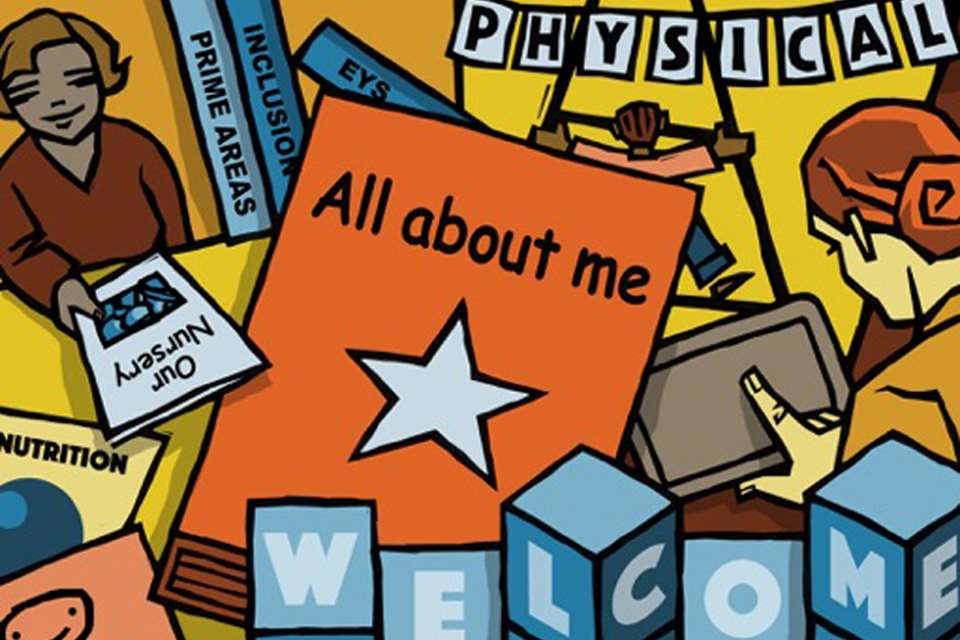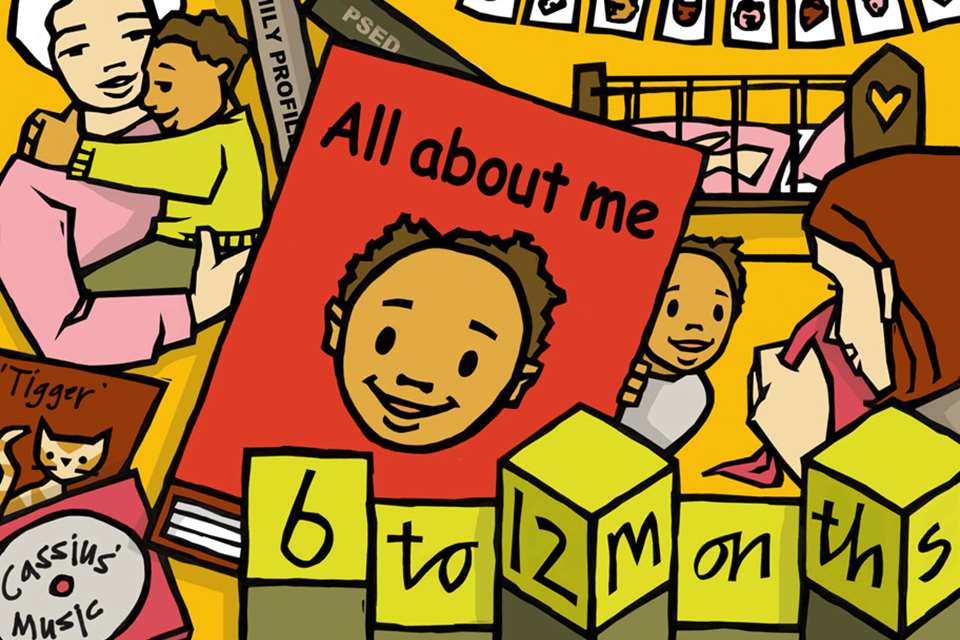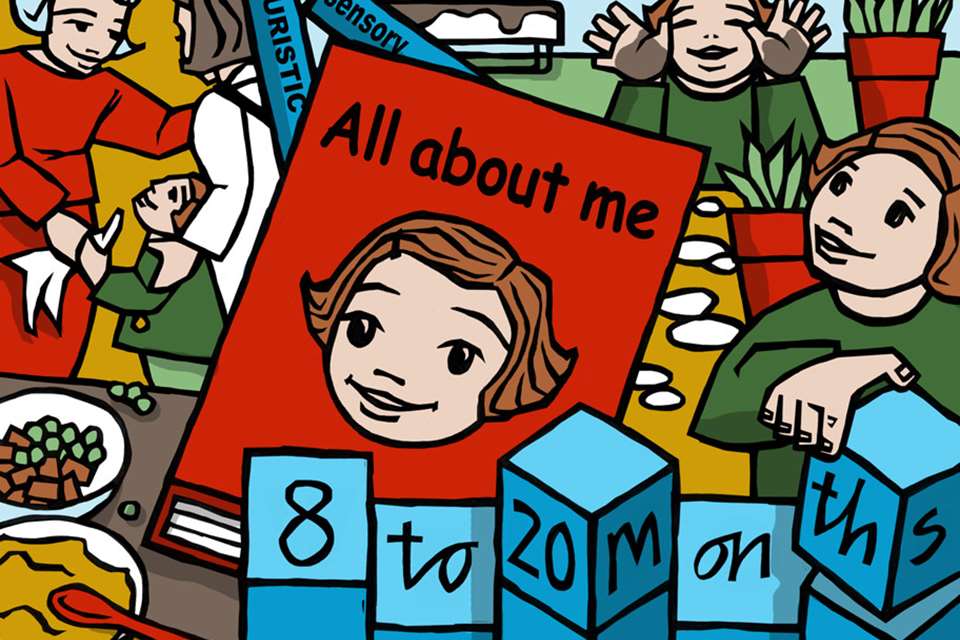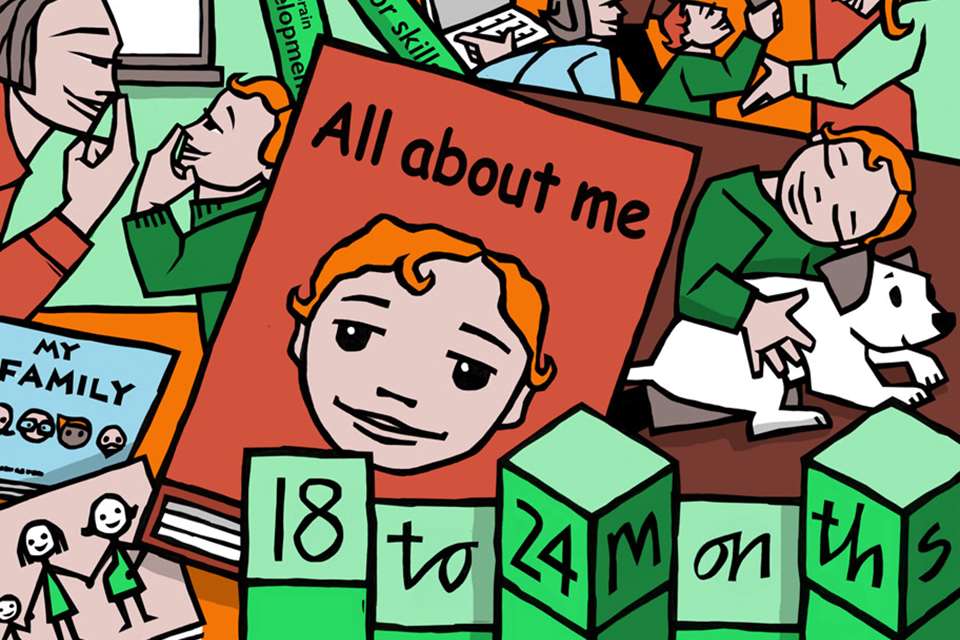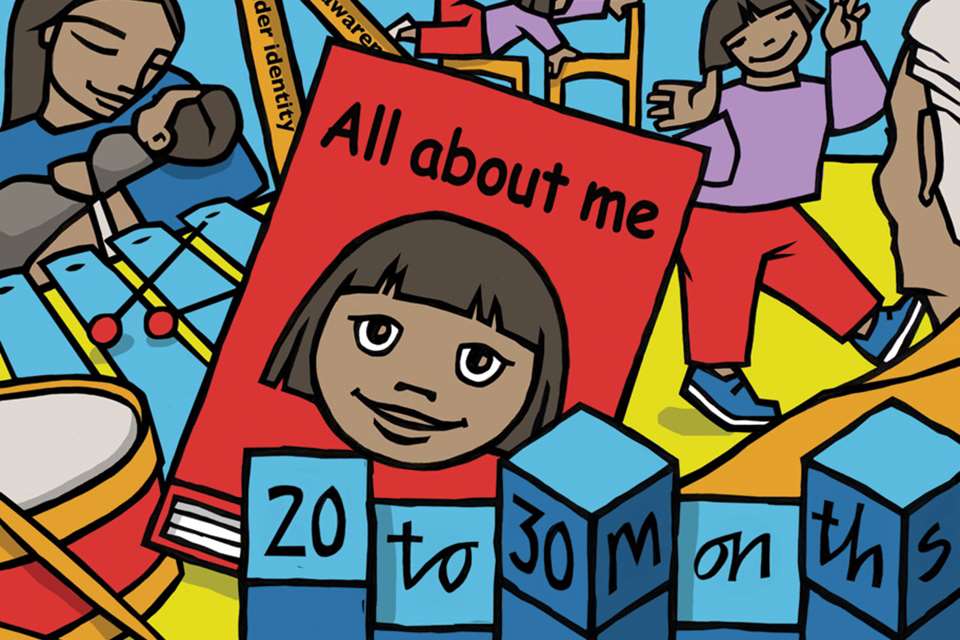STARTING POINTS: PART 6 - Leo, 30 months
Julia Manning-Morton
Monday, June 13, 2016
Meeting the emotional and learning needs of the unique child

Leo, aged 30 months old, lives in a small village near Shrewsbury with his father, Andy and mother Helen. Helen works part time from home, doing financial book-keeping, and Andy is an agricultural mechanic. Leo and his family are of white, English origin and do not follow a particular religion.
At Leo’s two-year check, the health visitor identified that his language and communication skills seemed to be delayed compared to the usual pattern of development. This delay also seemed to be having a negative effect on his social interactions which were further curtailed by Leo and his mother having few opportunities to socialise with other parents and young children. As a result, the health visitor strongly encouraged Helen to take Leo to the nearest children’s centre. Leo now attends a centre four mornings a week, accessed through the funded places for two-year-olds scheme.
THE UNIQUE CHILD:
A TRIANGLE OF TRUST
When the health visitor first suggestedå that Leo might benefit from attending the children’s centre, Helen felt offended and defensive, thinking that the health visitor was implying that she wasn’t a good enough parent. As a result, Helen was initially mistrustful of Leo’s key person, Colin, at the children’s centre and didn’t want to share much information with him. Sometimes her anxiety and unhappiness meant she criticised Colin for small things like misplacing Leo’s dummy.
As an experienced practitioner and a parent himself, Colin understood some of what Helen was feeling. He made it clear to her that she and Andy were the most important people in Leo’s life and that he respected her as a parent. At the end of each session, he always shared something positive that he had observed Leo doing and asked Helen’s advice about ideas for Leo’s play and care.
For young children to have a positive experience in an early years setting, key persons need to build what Elinor Goldschmied called a ‘triangle of trust’ between the practitioner, parent and child, built on respect and clear, regular, two-way communication.
For Helen, Leo and Colin, this trust began to be built during the settling-in period when they first started at the centre. For example, Helen had been worried that Colin wouldn’t let Leo have his dummy, as the health visitor had suggested that it was impeding his speech development. Colin explained to Helen that although he agreed that having a dummy all the time was not helpful for Leo’s speech, he could see that taking it away from him would cause Leo a lot of distress. So, Helen and Colin agreed that they would wait until later when Leo was more settled and then would encourage him to keep the dummy in his special box where he could get it out just when he needed it.
COMMUNICATION AND LANGUAGE
24-36 months: key aspects of development
Usually at this age, children will:
- understand simple sentences and follow a simple instruction or request
- sometimes understand more complex sentences, such as ‘When we’ve finished lunch, we’ll go to the library’
- enjoy rhythmic patterns in songs and stories and like favourites to be repeated
- display rigid attention, so may appear not to hear
- learn new words very rapidly and use them in their communications
- put two or three words together to make short phrases and ask simple questions using what, where, who
- start to use different types of words such as nouns (dog, book, car), verbs (go, run, eat) and adjectives (big, red, shiny)
- copy familiar expressions, such as ‘all gone’
- hold a short conversation
- use language as a way of making social contact
Social communication
By the age of two, young children have usually become competent at understanding language by dividing what they hear into little units and will display their understanding through following a request or instruction from another. When Colin first met Leo, he couldn’t work out whether Leo couldn’t hear what he said, was ignoring him or didn’t understand what he was saying.
Leo ignored Colin when he invited him to help put the blocks back in the box and seemed confused by some questions, particularly ‘why’ questions. Helen said she thought Leo knew what was going on but chose to ‘tune out’ sometimes.
She said they knew his hearing was fine because he had had a hearing test as part of his assessment. In fact, his hearing seemed to be very acute as Leo often showed discomfort in noisy environments and responded negatively to quite familiar everyday sounds if they were sudden or unexpected. As a result, Andy had bought Leo a pair of ear defenders, which made events such as going to the shopping centre more manageable.
At a review meeting, Leo’s difficulties with listening and responding were raised as a concern by the speech therapist. However, Colin explained that two-year-olds often focus their attention on just one thing and can find it hard to switch their attention quickly. He said that they are often more sensitive to noise and other sensory stimuli than older children and adults.
It was agreed that Colin would observe Leo over a further period of time before coming to any conclusions. Colin, Andy and Helen also agreed that when talking to Leo, they would make sure they engaged his attention by moving close enough to him, using his name and using short sentences, along with Makaton signing.
In his observations, Colin noticed how Leo didn’t like it when they all sang and played instruments together in a group indoors. He wasn’t sure if this was because of the noise or being surrounded by a lot of children, because he seemed fine with making a lot of noise outside in the garden. This led Colin to review group times with his colleagues; they made sure that group times were usually small (up to four children) and that these would take place outside as much as inside. Colin observed that Leo was much more interested in the sounds and rhymes in a story when it was on a 1:1 basis or maybe with one other child when he would echo the last few words at the end of each sentence. In fact, when he felt relaxed in the quiet company of Colin or his parents, Leo appeared much more responsive and communicative.
In the third year of life, expressive language is usually really taking off. For Leo, it seems to be ‘on pause’. He echoes what he hears and uses short sentences, particularly set phrases that his parents and the early years practitioners use, such as ‘all finished’ after eating, washing or dressing. These ‘etiquette scripts’ are important and useful tools for social communication but to be understood, each child’s ‘scripts’ need to be known by practitioners.
It is also important that two-year-olds have plenty of opportunity for hearing and using repeated language. It helps them to break down the sounds they hear into identifiable chunks and also to practise using the sounds; it also helps their cognitive understanding of an experience. Helen told Colin she had heard Leo repeating ‘wheel on bus go ‘ound n ‘ound’ to himself when they were on the bus to the centre. Colin wondered if Leo’s insistence on having that song repeated over and over was helping him to think about his journey to nursery as well as enjoying the rhyme and rhythm of the tune. To help him further with this, he made a picture story of the journey using photos of each aspect of the journey.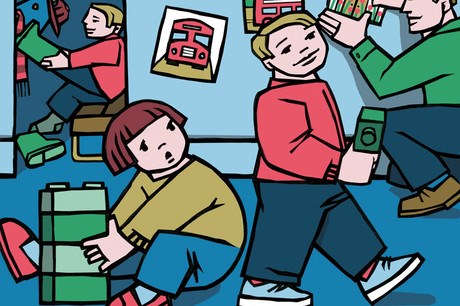
PERSONAL, SOCIAL AND EMOTIONAL DEVELOPMENT
Communication and language development is closely linked to social and emotional development. Generally, the different ways Leo expresses himself are understood by the adults around him. However, sometimes this is not the case, which can lead to a lot of frustration and Leo will then throw himself to the floor or throw an object he is holding. People express their emotions physically, through facial expression, gestures and actions; for two-year-olds, who are in the very early stages of emotional regulation, this is more obvious and unrestrained.
Because they cannot yet explain or put into words how they feel, they often have temper tantrums or ‘emotional collapses’. Colin asked Helen about how she usually managed these situations. She said she had tried to give Leo ‘time out’ by putting him in his room and closing the door but that he had got so distressed he had thrown all his toys and books on the floor. Colin suggested that having an emotional collapse can be very scary so it’s better to stay with the child at the time.
He described how he was clear with Leo that it was not ok to throw things but told him he understood that he was cross and frustrated and would help him with the problem. He would then sit near Leo until he was calmer and they could talk about what happened. In this way, Colin is supporting Leo’s emotional and language development.
Leo’s difficulty with ‘reading’ other people’s communications also makes his social relationships with other children difficult and they often come into conflict with each other. He finds it difficult to understand the other children’s needs and feelings and will often take what they are playing with if he is interested in it. Colin noticed how Leo gets quite agitated when another child cries but shows no empathy, telling them to ‘go away’.
Theory: theory of mind
The development of empathy and understanding others is based on children’s development of theory of mind: the idea that other people have different thoughts, feelings wishes and beliefs to you. It is called having theory of mind because it is not possible to actually know what is in someone else’s mind. Rather, we create a theory in our own minds based on our own previous experience in similar circumstances and our existing knowledge of that person and our reading of their body language and emotional state.
Very young children have less life experience than adults, so it is harder for them to understand and to think of someone else’s needs and adjust their behaviour accordingly. Their first steps in understanding others come from their experience of having their own thoughts, feelings and wishes understood.
24-36 months: key aspects of social development
Two-year-olds are usually very interested in other children and enjoy the company of others but need support with managing new social experiences. They can manage to socialise co-operatively:
- for only a small part of their day and:
- are beginning to be able to say how they are feeling but often feel frustrated when unable to express themselves so may have tantrums
- build relationships with special people and are wary of unfamiliar people.
- xplore new situations when supported by a familiar person and will return for reassurance if they become anxious
- are interested in other children and usually want to join in play but may not have the social skills to do so
- may form a special friendship with another child
- demonstrate a sense of self as an individual and want to do things independently
- respond to the feelings of others
PHYSICAL DEVELOPMENT: SELF-CARE
When Leo started at the children’s centre he had already stopped wearing nappies and was successfully using the toilet most of the time. Helen said that Leo had much preferred wearing no nappy at all but that had meant some messy events! So, she had insisted on him sitting on the toilet regularly if he didn’t have a nappy on and he gained control of his bladder and bowels quite quickly. Understandably, this relapsed a little when he started at the nursery but with support from Colin, he soon regained control.
Colin was impressed by Leo’s determination not to have wet pants and also by his other self-care skills: he uses a spoon and a fork competently at meal times and pours his own drink. He also puts on his wellington boots and hat independently and only needs a little help with his coat.
24-36 months:
Key aspects of self-care
Two-year-olds can usually:
- feed themselves with a spoon
- drink without spilling
- communicate their need for the toilet
- recognise danger and ask adults for help
- help with dressing themselves
COGNITIVE DEVELOPMENT: UNDERSTANDING AND CONFUSION
Although Leo has difficulty understanding how people work, he seems to be very interested in how animals and things work. Colin was amazed by the way Leo would notice the tiniest details in a picture or of an insect he found in the garden. However, it baffled Colin that although Leo recognised many different shapes, he seemed to get easily confused by colours.
Equally, Leo loves to explore the wind-up cars and is adept at making pictures on the computer, but he is not interested in drawing or painting in other ways or playing with the small-world toys. It seems as if Leo’s play is focused completely on exploring the properties of objects and what they can do; he is not as yet interested in playing with things imaginatively.
In fact, Leo seems to be easily upset and confused by other people pretending; he hit out at Stefan, aged four, who was chasing around wearing a mask and being a ‘wolf’.
24-36 months: key aspects of cognitive and creative/representational development
Most two-year-olds are beginning to use their play to think about ‘What could this be?’ or ‘Who might I pretend to be?’ as well as ‘What is it?’ and ‘What does it do?’ Although many will easily become confused between what is real and what is pretend, two-year-olds usually:
- experiment with making different marks and with using objects and marks as symbols
- begin to make-believe by pretending
- show an early understanding of quantity and size, saying, for example, ‘little’, ‘more’ and ‘bigger’
- notice shapes and patterns and detailed features of objects
- show an early understanding of time by anticipating events such as home-time
- imitate everyday actions and events from own experience
- remember where things belong
- match everyday things
- enjoy playing with small-world models
- show interest in and operate mechanical toys and some ICT equipment
THE UNIQUE CHILD:
IN PRACTICE
As time went on, it became increasingly clear that Leo was on the autistic spectrum. His development continued to
vary from the usual expectations of children his age; in some aspects he did not meet the usual expectations while in others he exceeded them.
This pattern of development was sometimes confusing both for his family and for the professionals involved with him. However, they continued to follow closely his development and learning, and with information and help from specialist professionals and other parents with similar experiences, they all came to understand and value Leo for being his unique self.
Further reading
- Manning-Morton, J and Thorp, M (2015) Two Year Olds in Early Years Settings; Journeys of Discovery. Maidenhead. OUP.
- Manning-Morton, J and Thorp, M (2003) Key Times for Play, The first three years. Maidenhead. OUP.
- Mathieson, K and Stewart, N (2013) I am Two: Working Effectively with Two Year Olds and Their Families. London: Early Education
- Tassoni, P (2014) Getting It Right for Two Year Olds. London: Hodder Education.
- Supporting Children on the Autistic Spectrum by 4Children Early Years Team (2011) www.foundationyears.org.uk/2011/10/supporting-children-on-the-autistic-spectrum/
By Julia Manning-Morton, an independent consultant, trainer and author (www.key-times.co.uk/profiles/). She specialises in practice and provision that meets the needs of children under three and is an expert on the personal, social and emotional well-being of children and practitioners. Her publications include Two-Year-Olds In Early Years Settings: Journeys Of Discovery (2015) and Exploring Well-being in the Early Years (2014)


